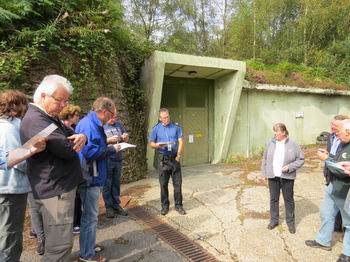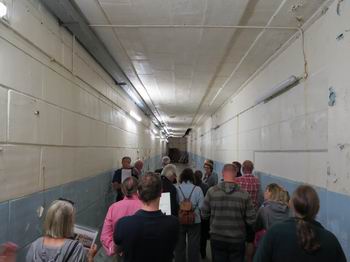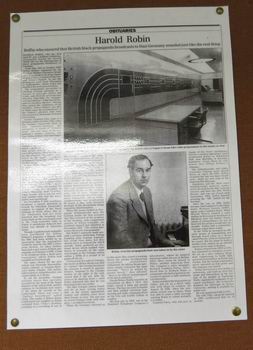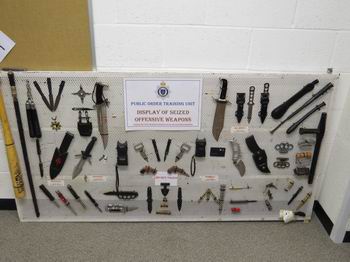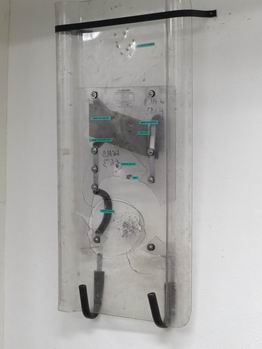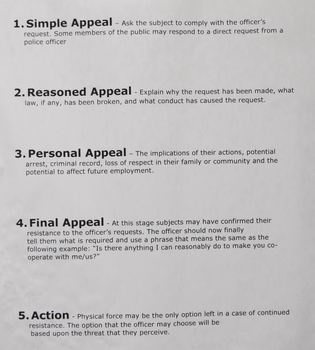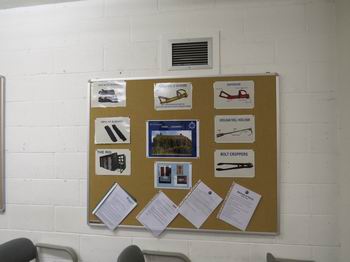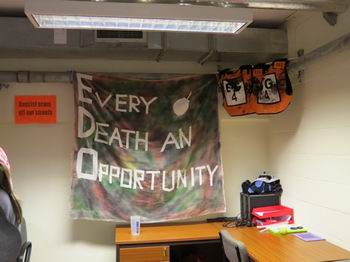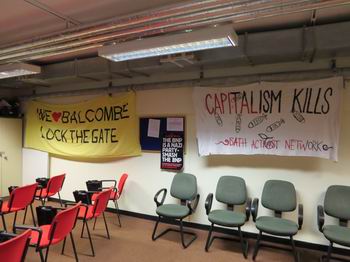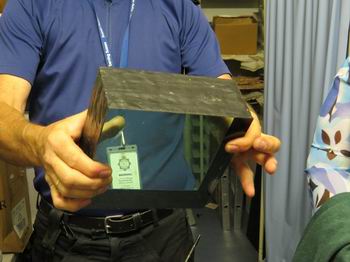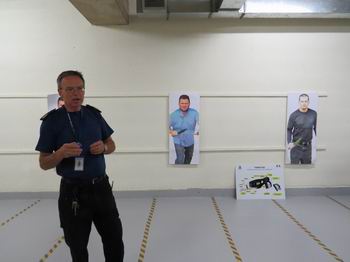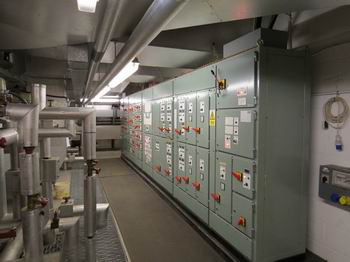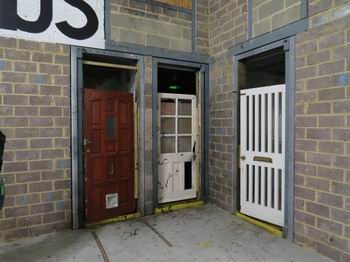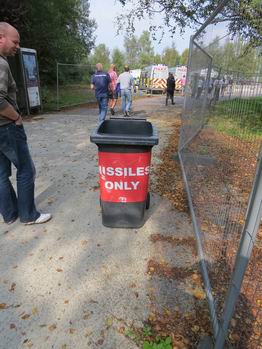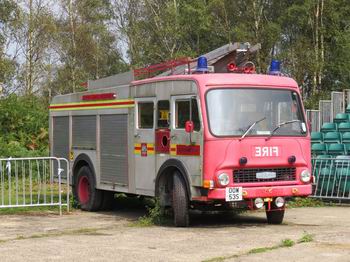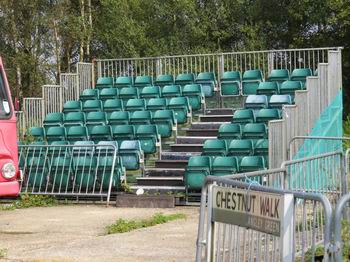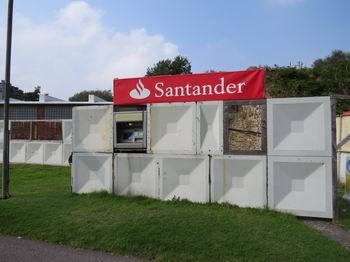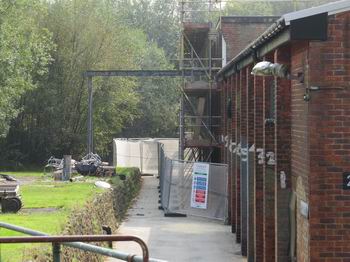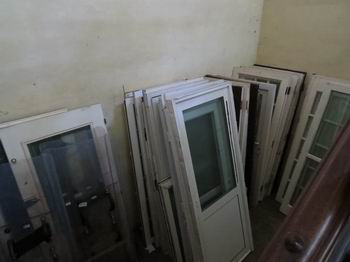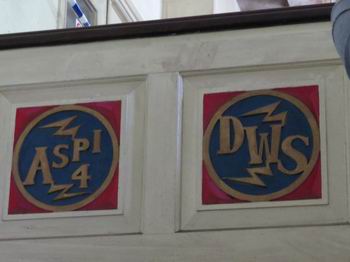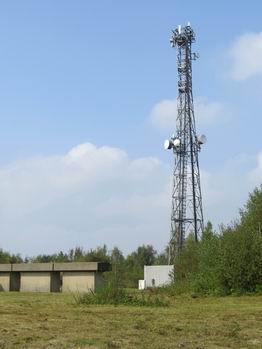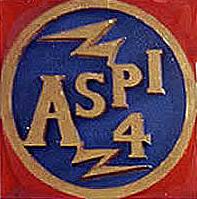
Aspidistra, Nuclear Bunker & Police Training
As you travel over the forest, just past King’s Standing you come across a fenced off area now owned by Sussex Police. However, behind the
barbed wire lies the story of how Britain managed to flood Germany with fake transmissions during World War II.
In May 1941, Hugh Dalton from the Ministry of Economic Welfare and Anthony Eden (later Prime Minister) came up with a plan to transmit black
propaganda to the Germans in occupied Europe. The idea was to transmit on German wavelengths and drown out the local broadcasts. This meant
seriously high tech equipment was called for. No such transmitter in Britain was capable of such a task but Colonel Richard Gambier-Perry (head of Special Intelligence Service
communications) knew of a possibly suitable transmitter in the USA. It had been built by RCA for the broadcasting station WJZ in New Jersey,
but had been prohibited from operating by the Federal broadcasting authorities because it was ten times more powerful than the maximum limit
laid down for commercial radio stations in the USA at that time!
Harold Robin, a senior radio engineer from the Political Warfare Executive (PWE) complex in Bedfordshire, was sent to the USA to view the
transmitter. Harold spent two months working with RCA making modifications to the transmitter. By the time they had finished the transmitter
was able to transmit at 600kW. It took three 360ft masts for the transmitter to feed. Unfortunately, one of the Royal Navy ships used to transport the transmitter and masts to the UK were torpedoed and one of the masts was lost.
A duplicate had to be made and shipped to Britain.
Originally the transmitter was to be sited as part of the PWE complex in Bedfordshire. But Harold Robin insisted that it should be as close to
the South Coast as possible - in Sussex. There were several possible sites, but each was rejected by argument from the Air Ministry (the masts would be a hazard), or the BBC
(interference to secret research work). No one objected to the site on Ashdown Forest at King’s Standing. It was public land and 620 feet
above sea level.
The Canadian Army based nearby were employed to erect the transmitter. Using a civilian work force some 600 strong as extra manpower and
working 24 hours a day, it took just three weeks to excavate the 50 foot deep hole which was covered with four feet thick reinforced concrete.
The transmitter complex had taken 9 months from approval to finish at a cost of around £127,000. It used an antenna consisting of 3 guyed masts,
each 110 metres tall. The transmitter was given the name of Aspidistra after the popular tune of the day ‘The biggest Aspidistra in the world’
by Gracie Fields. After all it was the biggest transmitter in the world.
At first, the PWE were not really sure how best to use Aspidistra so it was agreed that it would be used to supplement the BBC’s overseas
broadcasts. Aspidistra first went on air on November 8th 1942 when it broadcast a recording by President Roosevelt just before the start of
the ‘Torch’ landings in North Africa. Around this time, Naval Intelligence, led by Rear Admiral John Godfrey, had already been working on an idea of using a transmitter to broadcast
propaganda. The project was only partially successful since it used recorded programmes. It was decided to build new studios at the Milton
Bryan complex to make live broadcasts. A dedicated land-line was constructed to carry the programme material from Bedfordshire to Sussex.
The name for the new station was to be ‘Deutsche Kurzwellensender Atlantik’ - Atlantiksender, for short!
Soon another station, linked to Atlantiksender, was planned and the real purpose for ‘Aspidistra’ began to be fulfilled. Atlantiksender was to
be directed to the German Army and the Luftwaffe and was to be on the medium waveband. Its name was to be Soldatensender Calais - later
Soldatensender West, after the Normandy landings. The battle with the BBC for Aspidistra was won finally in October 1943 and Soldatensender
Calais was on the air from Crowborough using Aspidistra’s full 600kW, allowing it to drown out any other existing station. Harold Robin had
also installed a further two 100kW short-wave transmitters (now used for Atlantiksender) and four 7.5kW transmitters. He even had a mobile
500W unit operating as a relay from the top of the cliffs at Dover - just to confuse the enemy direction finders if they tried to get a fix
on Aspidistra!
In 1943 during a British bombing raid, Aspidistra was first used to broadcast fake instructions to German night fighter aircraft directing them
to land. As German operational procedures changed to prevent impersonation, so the British copied them. German radio transmitters were switched
off during air raids, to prevent them from being used as navigational aids by allied bomber aircraft. However, many transmitters were connected
into a network and broadcast the same content. When a targeted transmitter switched off, Aspidistra began transmitting on their original
frequency, initially retransmitting the German network broadcast as received from a still-active station. As a deception, false content and
pro-Allied propaganda would be inserted into the broadcast.
The first such “intrusion” was carried out on 25 March 1945. On 30 March 1945 Aspidistra intruded into the Berlin and Hamburg frequencies
warning that the Allies were trying to spread confusion by sending false telephone messages from occupied towns to unoccupied towns. On 8
April 1945 Aspidistra intruded into the Hamburg and Leipzig channels to warn of forged banknotes in circulation. On 9 April 1945 there were
announcements encouraging people to evacuate to seven bomb-free zones in central and southern Germany. All these announcements were false.
The German radio network tried announcing “The enemy is broadcasting counterfeit instructions on our frequencies. Do not be misled by them.
Here is an official announcement of the Reich authority.” Of course, the Aspidistra station made similar announcements, to cause confusion
and make the official messages ineffective. Aspidistra became very popular with the German population who actually believed they were listening to real German radio stations. The
broadcasts included anti-allied propaganda and comments against the Royal Family. Big band music and Jazz were broadcast in the knowledge
that German public were not able to listen freely to this type of decadent music.
Aspidistra was able to reach deep into Germany and various tests were made to verify this. When a number of messages were sent asking people
in various towns to donate warm clothing for soldiers fighting in cold areas, numerous people actually turned up with clothing, much to the
surprise of the local commanders! As an example of what Aspidistra could do, imagine a bombing raid taking place on Hamburg. Before the raid Aspidistra would tune into the
Hamburg frequency and monitor the programme. The same programme would also be being transmitted on from, say, Frankfurt and would also be
monitored at Milton Bryan.
As it became obvious that the RAF was heading for Hamburg, the Hamburg station would go off air, so as not to be used for navigation by the
incoming bombers. Within about eight milliseconds of Hamburg dropping its signal, Aspidistra would come on air on the Hamburg frequency relaying
the programme received at Milton Bryan from Frankfurt. All the interruption in programme that the locals in Hamburg would hear would be a
slight ‘click’! The ‘Hamburg’ programme was now under British control and all sorts of bogus information could be provided to cause panic and
distress to the inhabitants under attack.
By the end of the war, Aspidistra had been used on ten operations of this type during attacks on cities such as Cologne, Frankfurt and Leipzig.
According to captured reports, these hoax transmissions were very successful. The last transmission of Soldatensender West from Milton Bryan via Aspidistra was made at 5.59pm on Friday 30th April 1945. However, the
station still remained in the hands of the Foreign Office (the Diplomatic Wireless Service) providing the External Services of the BBC.
‘Aspidistra’ remained in continuous service for forty years until it was finally decommissioned on September 28th 1982. Harold Robin performed
the final shut-down. Work was started to dismantle the equipment in May 1984; the aerials being demolished by simply cutting the guy-wires and letting them fall
down!
The site was never bombed or attacked during the war. However, it was in what was known as ‘Doodlebug Alley’, a direct line between the V1
launch sites and London. There are various accounts of missiles flying over the site, including one where Harold Robin was at the top of one
of the high masts when a V1 passed below him and between the masts! This was a cause of great excitement at the time, but was kept a secret until long after the war had finished. One V1 did land near the east
fence of the site, having hit the hillside. It remained there until 1985, when scrap dealers were allowed to enter and remove the metal.
In 1986, following extensive modifications, the ‘bunker’ was commissioned by the Home Office as one of the seventeen Nuclear Bunkers in England
and Wales to be used as seats of regional government in the event of a nuclear attack.
From 1988, Sussex Police used parts of the site, purchasing all of it in 1996 for use as a training facility.

